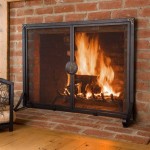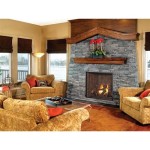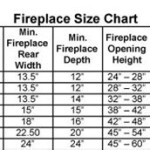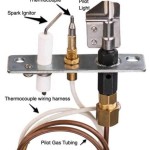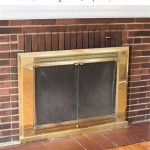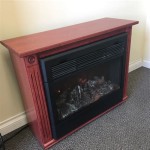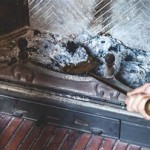Outdoor Fireplace Brick Oven: A Fusion of Ambiance and Culinary Art
The outdoor fireplace brick oven represents a significant investment in both home aesthetics and culinary capabilities. It combines the visual appeal and social gathering point of a traditional fireplace with the superior cooking performance of a brick oven, offering a unique and versatile outdoor living experience. This architectural feature can transform a backyard into a sophisticated entertaining space, providing both warmth and the ability to create authentic, wood-fired cuisine.
The construction of an outdoor fireplace brick oven is a complex undertaking that requires careful planning and execution. Several factors must be considered, including local building codes, available space, desired oven size, and aesthetic integration with the existing landscape. Understanding the fundamental principles of brick oven construction and fireplace design is crucial for a successful project. This includes knowledge of refractory materials, insulation techniques, and proper ventilation.
The materials used in building an outdoor fireplace brick oven are critical to its performance and longevity. Firebricks, specifically designed to withstand high temperatures, are essential for the oven's cooking chamber. These bricks are typically denser and more heat-resistant than standard bricks. Refractory mortar, a specialized type of mortar that can withstand extreme heat, is also a necessity. The exterior of the fireplace can be constructed from a variety of materials, including standard bricks, stone, or stucco, depending on the desired aesthetic.
Insulation is a crucial aspect of brick oven construction. Proper insulation helps retain heat within the oven, allowing for more efficient cooking and reduced fuel consumption. Insulation materials, such as ceramic fiber blankets or vermiculite, are typically placed around the oven dome and beneath the cooking floor. This insulation minimizes heat loss and ensures consistent cooking temperatures. The fireplace component may also incorporate insulation, particularly around the firebox, to improve efficiency and prevent heat transfer to surrounding structures.
Key Point 1: Design Considerations and Planning
The initial phase of building an outdoor fireplace brick oven involves meticulous planning and design. This includes determining the optimal location for the structure, considering factors such as prevailing winds, proximity to the house, and accessibility to wood storage. The size of the oven should be determined based on the anticipated cooking needs – a smaller oven might suffice for a family, while a larger oven is better suited for frequent entertaining. The design should also integrate seamlessly with the existing outdoor landscape, complementing the architectural style of the house and surrounding features.
The design phase also includes obtaining necessary permits and adhering to local building codes. Many municipalities have specific regulations regarding outdoor fireplaces and ovens, including setback requirements, height restrictions, and emissions standards. Failure to comply with these regulations can result in fines or the need to dismantle the structure. Therefore, it is crucial to research and adhere to all applicable local codes before commencing construction.
Furthermore, the design should consider the functional aspects of the fireplace brick oven. This includes ensuring adequate ventilation for the fireplace, which is essential for efficient combustion and smoke reduction. The oven design should also incorporate features such as a chimney flue damper to control airflow and heat retention. The cooking floor of the oven should be level and smooth, providing an optimal surface for baking pizzas, roasting vegetables, and cooking other dishes. Accessibility for cleaning and maintenance should also be factored into the design.
Finally, aesthetic considerations play a significant role in the overall design. The choice of materials, colors, and finishes should complement the existing landscape and architectural style of the home. The design can incorporate decorative elements, such as arches, corbels, or mosaic tiles, to enhance the visual appeal of the structure. The fireplace brick oven can be designed to be a focal point in the outdoor space, adding both beauty and functionality.
Key Point 2: Construction Process and Techniques
The construction of an outdoor fireplace brick oven is a labor-intensive process that requires specialized skills and knowledge. The foundation is the crucial starting point. It must be solid, level, and capable of supporting the weight of the entire structure. A concrete slab is often used as a foundation, reinforced with steel rebar for added strength. The size and thickness of the foundation will depend on the size and design of the fireplace brick oven.
The fireplace component is typically constructed first, using standard bricks or stone. The firebox should be lined with firebricks to withstand the high temperatures generated by the fire. The chimney is a critical element of the fireplace, providing adequate draft for proper combustion and smoke removal. The chimney should be constructed to the correct height and diameter, based on the size of the firebox and the surrounding environment.
The construction of the brick oven involves creating a dome-shaped structure using firebricks. This can be achieved using various techniques, including the traditional sand mold method or the modern pre-fabricated dome kits. The sand mold method involves creating a dome-shaped mold using damp sand and then laying firebricks over the mold, securing them with refractory mortar. Once the mortar has set, the sand is removed, leaving a hollow dome. Pre-fabricated dome kits offer a more streamlined approach, providing pre-cut firebricks and instructions for assembling the dome.
Insulation is applied around the oven dome to retain heat and improve efficiency. Ceramic fiber blankets are often used for this purpose, wrapped around the dome and secured with wire mesh. Vermiculite, a lightweight insulating material, can also be used to fill the space between the oven dome and the exterior enclosure. Adequate insulation is crucial for achieving optimal cooking temperatures and reducing fuel consumption. The exterior of the fireplace brick oven can be constructed from a variety of materials, such as brick, stone, or stucco, depending on the desired aesthetic. The exterior should be waterproofed to protect the structure from the elements.
Key Point 3: Operational Considerations and Maintenance
Operating an outdoor fireplace brick oven requires an understanding of wood-fired cooking techniques. Different types of wood can be used to fuel the fire, each imparting a unique flavor to the food. Hardwoods, such as oak, maple, and hickory, are preferred for their long-burning qualities and consistent heat output. Softwoods, such as pine and fir, burn quickly and produce more smoke, making them less suitable for cooking.
The process of firing up the brick oven involves building a fire inside the oven and allowing it to burn for several hours, until the oven walls have reached the desired temperature. The temperature can be monitored using a pyrometer, which measures the heat inside the oven. Once the oven has reached the desired temperature, the embers are pushed to the side or removed, and the food is placed inside the oven to cook. The cooking time will vary depending on the type of food and the oven temperature.
Maintaining an outdoor fireplace brick oven is essential for its longevity and performance. Regular cleaning is necessary to remove ash and soot buildup from the oven chamber and chimney. The chimney should be inspected annually for blockages or damage, and cleaned if necessary. The firebricks should be inspected for cracks or damage, and replaced as needed. The exterior of the fireplace should be cleaned and waterproofed regularly to protect it from the elements. Proper maintenance will ensure that the outdoor fireplace brick oven remains a functional and aesthetically pleasing feature for years to come.
Using an outdoor fireplace brick oven offers a unique culinary experience. The intense heat and smoky flavor imparted by the wood fire create dishes that are difficult to replicate in a conventional oven. From pizza and bread to roasted meats and vegetables, the possibilities are endless. The outdoor setting also provides a social and relaxing atmosphere, making it an ideal venue for entertaining friends and family. A well-designed and properly maintained outdoor fireplace brick oven can be a valuable addition to any home, providing both culinary enjoyment and aesthetic appeal.
The initial cost of constructing an outdoor fireplace brick oven can be substantial, depending on the size, design, and materials used. However, the investment can be justified by the long-term benefits of increased home value, enhanced outdoor living space, and the ability to create authentic wood-fired cuisine. With proper planning, construction, and maintenance, an outdoor fireplace brick oven can become a cherished feature of the home.

Outdoor Combo Fireplace And Oven Round Grove S

Outdoor Fireplace And Ovens Round Grove S

Mezzo Vent Free Fireplace Oven Combo Stone Age Manufacturing

Outdoor Fireplace With Oven A Perfect Red Brick Oasis Brickwood Ovens

Outdoor Oven Fireplace Round Grove S Fiesta Patio Furnishings

Outdoor Fireplace And Oven Makes Entertaining Easy

Outdoor Fireplace And Oven Round Grove Kiva Combo Patio Furnishings

Outdoor Oven Fireplace Options And Ideas

Brick Oven Cooking With Round Grove Easy Peasy Meals

Outdoor Fireplace And Oven Makes Entertaining Easy
Related Posts

